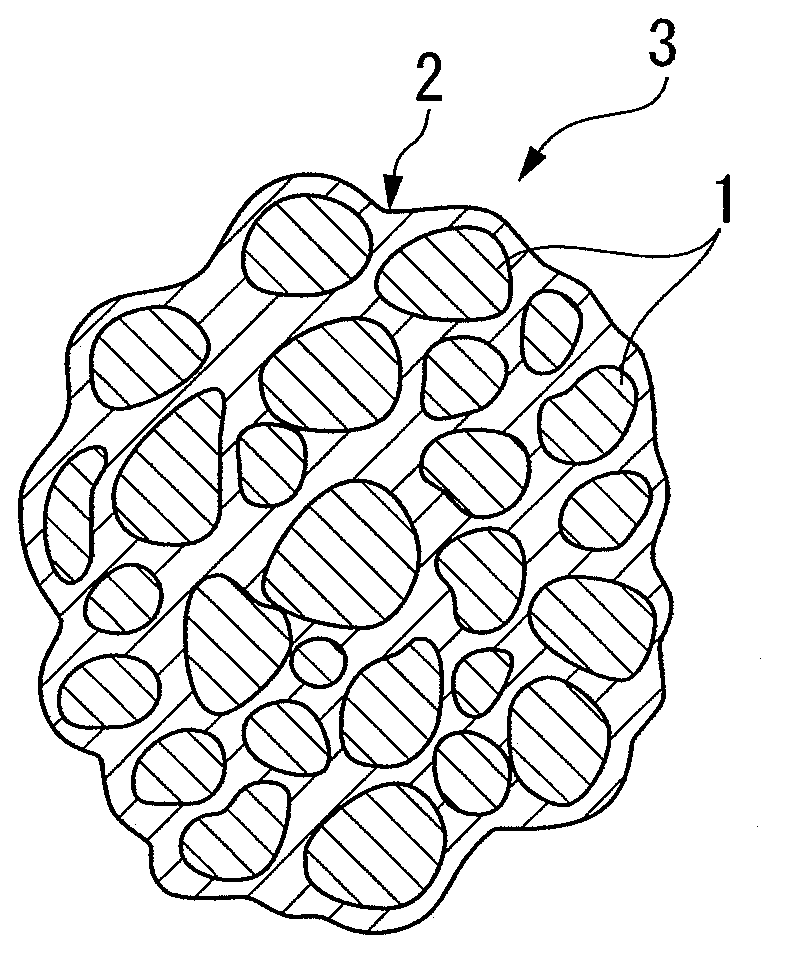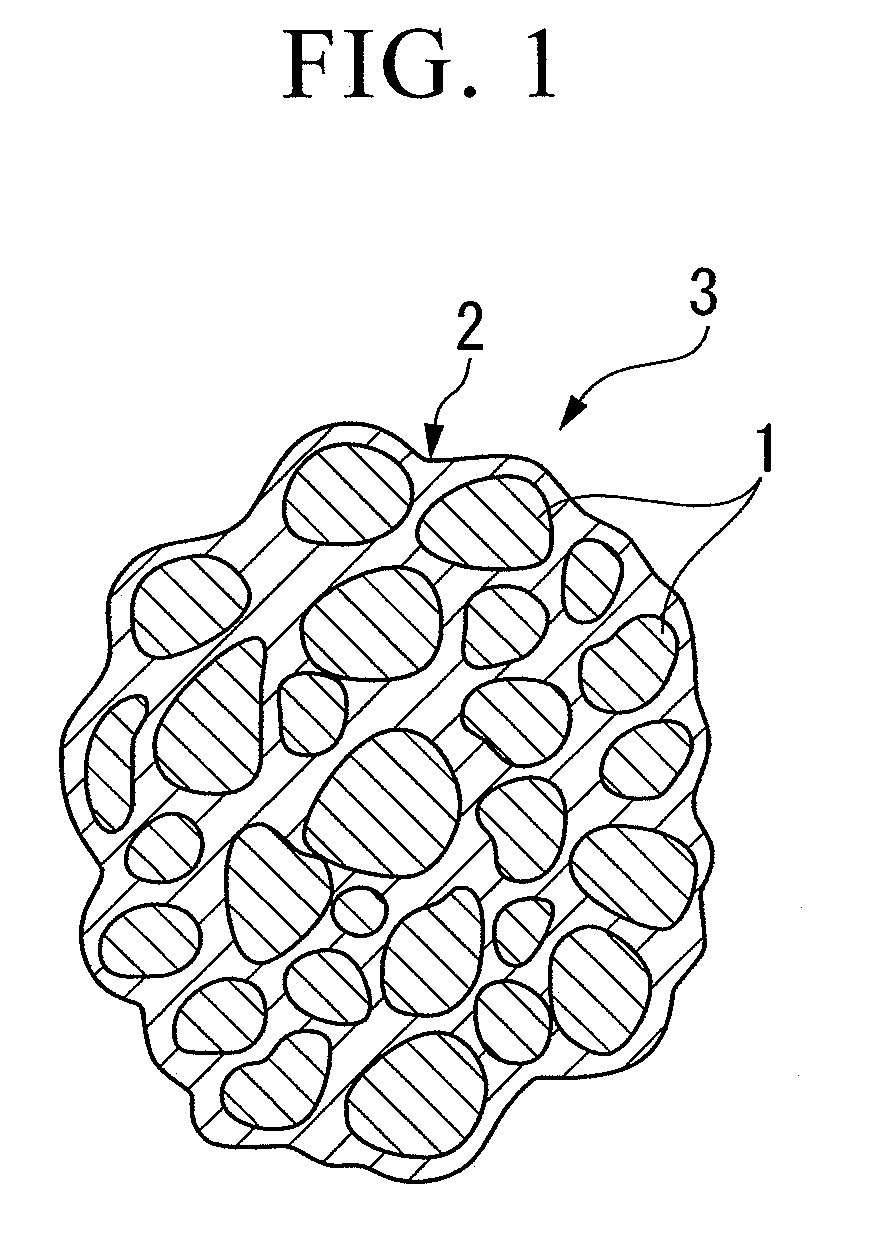Electrode material, method for producing the same, electrode and battery
a technology of electrode material and electrode material, which is applied in the manufacture of final products, cell components, chemistry apparatus and processes, etc., can solve the problems of deterioration of application performance of the electrode material mixture, low electron conductivity, and increased specific surface area of the carbonaceous coating film, etc., to achieve excellent conductivity and excellent conductivity , the effect of not increasing the specific surface area
- Summary
- Abstract
- Description
- Claims
- Application Information
AI Technical Summary
Benefits of technology
Problems solved by technology
Method used
Image
Examples
example 1
[0112]lithium acetate (LiCH3COO) of 4 mol, iron sulfate (II) (FeSO4) of 2 mol, and phosphate (H3PO4) of 2 mol were mixed with 2 L (liter) of water for 20 minutes so that the total amount was 4 L (liter), thereby preparing a uniform slurry-like mixture.
[0113]Then, the mixture was accommodated in a pressure resistant airtight container with a volume of 8 L (liter) and was subjected to hydrothermal synthesis at 120° C. for 1 hour, and the obtained precipitate was washed with water, thereby obtaining a precursor of a cake-like electrode active material.
[0114]Then, about 6.5 g of lithium sulfate (Li2SO4) as a sulfur compound was added to 150 g (in terms of solid state) of the precursor of the electrode active material, and was kneaded. Then, a material obtained by dissolving 5.5 g of polyethylene glycol as an organic compound in 150 g of water is added to the kneaded material, a 500 g zirconica ball with a diameter of 5 mm was further added as medium particles, it was put into a 2000 mL ...
example 2
[0118]An electrode material (A2) was obtained in the same manner as Example 1, except that about 8.0 g of calcium sulfate (CaSO4) was used as the sulfur compound.
[0119]The electrode material (A2) was observed by the scanning electron microscope (SEM) and the transmission electron microscope (TEM). As a result, it was observed that a plurality of primary particles were collected to be secondary particles, the surfaces of the primary particles are covered with a thin film of carbon, and carbon was interposed between the primary particles. The electrode material (A2) had a ball shape with an average particle size of 5 μm.
example 3
[0120]An electrode material (A3) was obtained in the same manner as Example 1, except that sulfuric acid (H2SO4) of about 5.9 g was used as the sulfur compound.
[0121]The electrode material (A3) was observed by the scanning electron microscope (SEM) and the transmission electron microscope (TEM). As a result, it was observed that a plurality of primary particles were collected to be secondary particles, the surfaces of the primary particles are covered with a thin film of carbon, and carbon was interposed between the primary particles. The electrode material (A3) had a ball shape with an average particle size of 5 μm.
PUM
| Property | Measurement | Unit |
|---|---|---|
| particle size | aaaaa | aaaaa |
| particle size | aaaaa | aaaaa |
| particle size | aaaaa | aaaaa |
Abstract
Description
Claims
Application Information
 Login to View More
Login to View More - R&D
- Intellectual Property
- Life Sciences
- Materials
- Tech Scout
- Unparalleled Data Quality
- Higher Quality Content
- 60% Fewer Hallucinations
Browse by: Latest US Patents, China's latest patents, Technical Efficacy Thesaurus, Application Domain, Technology Topic, Popular Technical Reports.
© 2025 PatSnap. All rights reserved.Legal|Privacy policy|Modern Slavery Act Transparency Statement|Sitemap|About US| Contact US: help@patsnap.com


